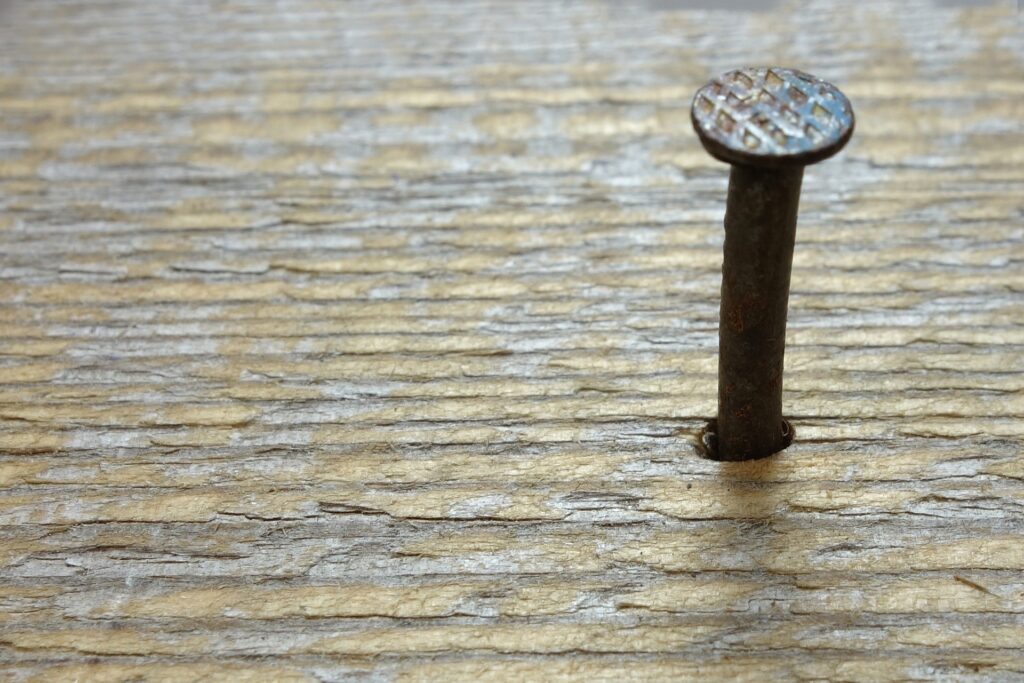Blog
How to Choose the Right Nails

Choosing the right nails for your project is a critical step in ensuring success.
Nails are one of the most common and versatile fasteners used in woodworking, construction, and various DIY projects.
Whether you’re building furniture, framing a house, or hanging a picture frame, selecting the right nails for your project is vital to guarantee both aesthetic appeal and structural stability.
In this thorough tutorial, we will examine the things to think about when choosing nails, the different types of nails available, and practical tips to make informed decisions for your specific project needs.
Factors to Consider When Choosing Nails
Before diving into the specifics of nail types, it’s essential to understand the factors that influence your nail selection. This will help you choose the right nails for your project:
Material and Application: Consider the materials you’re joining, as well as the intended use of your project. Nails for woodworking may differ from those used in construction or upholstery.
Length and Size: Nail length and size should match the thickness of the materials you’re fastening. Longer nails provide more holding power, while shorter ones are less likely to split wood.
Head Type: Nails come with various head types, including flat, round, and countersunk. The choice depends on whether you want the nail head to be visible or flush with the surface.
Nail Gauge: The gauge refers to the nail’s thickness. A lower gauge number indicates a thicker nail. Heavier materials typically require thicker nails.
Coating: Nails can have various coatings, such as galvanized, stainless steel, or cement-coated, to resist corrosion and enhance durability.
Environmental Conditions: Take into account the surroundings to which your project will be subjected. such as indoor or outdoor use. Exposure to moisture and weather may require corrosion-resistant nails.
Common Types of Nails
Now, let’s explore some of the most common types of nails and their suitable applications:
Common Nails: These are versatile nails with a large, flat head. They are suitable for general construction, framing, and rough carpentry projects.
Finish Nails: Finish nails have a small, discreet head that can be easily concealed when driven below the surface. They are ideal for trim work, cabinet making, and other projects where aesthetics matter.
Brad Nails: Brad nails are thin and small-gauge, making them perfect for delicate work like attaching trim and molding.
Roofing Nails: These nails are designed for roofing materials and have a large, flat head and a shank with a twist to prevent them from backing out.
Masonry Nails: Masonry nails have a hardened steel construction and are used for fastening wood to concrete or brick surfaces.
Casing Nails: Casing nails have a thicker shank and are used for attaching doors and window frames.
Duplex Nails: These are dual-purpose nails with a smooth shank on one end and a ringed shank on the other. They offer a excellent grip and are okay for framing.
Coil Nails: Coil nails come in long, wire-collated coils and are commonly used with pneumatic nail guns for fast and efficient framing and roofing.
Practical Tips for Choosing the Right Nails
Refer to Building Codes: For construction projects, consult local building codes and regulations to ensure compliance with nail specifications and requirements.
Test Nails on Scrap Material: Before committing to a specific type of nail, test it on a scrap piece of the same material to ensure it performs as expected.
Use the Right Nail Gun: If you’re using a nail gun, ensure that it’s compatible with the nail type and size you plan to use. Different nail guns are designed for different applications.
Consider the Weight: When hanging heavy objects, such as shelves or cabinets, choose nails that can support the weight. Wall anchors or screws may be necessary for added support.
Prevent Splitting: To prevent wood from splitting, especially near the edges, pre-drill holes slightly smaller than the nail diameter.
Use Corrosion-Resistant Nails Outdoors: If your project will be exposed to the elements, opt for nails with corrosion-resistant coatings like galvanized or stainless steel.
Match the Head Type to the Surface: Choose a nail head type that suits the surface you’re nailing into. For visible surfaces, countersunk or finish nails provide a cleaner appearance.
Consider the Finish: If you’re working on a project with exposed nails, you may want to choose nails with a finish that complements the overall aesthetic.
Safety First: Always wear the correct safety gear, including eye protection and hearing protection, when using nail guns or hand tools.
Conclusion
By considering factors like material, size, head type, and environmental conditions, you can make informed decisions that will lead to strong and secure connections. With the wide variety of nails available, there’s a perfect match for every project, whether you’re building a structure, crafting fine furniture, or simply hanging a picture frame. So, take your time, do your research, and nail your next project with confidence.
More reading
The Benefits of Precision Tools in DIY and Craftsmanship